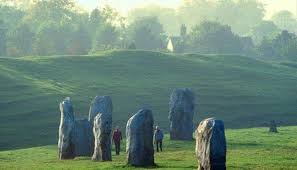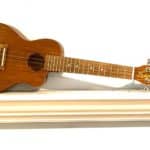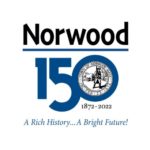
25
AprThe Mystery of the Standing Stones
 What sounds like the title of a Nancy Drew novel is actually my most recent fascination. In Britain they call them stones, but they’re really rocks—big ones. I’m referring to the roughly 1300 Neolithic monuments found throughout the U.K. known as stone circles and standing stones.
What sounds like the title of a Nancy Drew novel is actually my most recent fascination. In Britain they call them stones, but they’re really rocks—big ones. I’m referring to the roughly 1300 Neolithic monuments found throughout the U.K. known as stone circles and standing stones.
I just got back from my daughter’s wedding to her British beau in the Cotswolds. Having crossed the pond for the nuptials–and paid the annoying surcharge to check a bag–my husband Brad and I were in no great hurry to leave. We hired a car and drove four hours on the wrong side of the road to Cornwall, the rocky peninsula at the southwest tip of England that’s warmed by the Gulf Stream–allegedly. It wasn’t exactly balmy, despite the presence of palm trees, but it was definitely picturesque. Devotees of Poldark, Doc Martin, or the BBC mini-series of Daphne du Maurier’s Jamaica Inn might recognize some of the scenery.
We looked forward to hiking the cliffs, taking photos of fishing boats and quaint villages, and feasting on traditional Cornish pasties and cream teas. What I didn’t anticipate was how our first stop at the Avebury Stone Circles would spark an obsession with searching out smaller versions of the same over the next few days.
It was cool and misty the next morning as we contemplated the stones from our window seat at the inn during our first full English breakfast. If you’re not a fan of cooked tomatoes, beans, and blood sausage, I suggest passing on this quintessentially British staple. We had planned on a brief walkabout before making our way to Stonehenge but were persuaded to join a tour with a volunteer from the National Trust. I’m so glad we did.
You can stroll right up and touch the lichen-covered stones here, the largest prehistoric stone circle in the world. From our knowledgeable guide–big on enthusiasm but oblivious to the cold and damp that reduced our numbers to a mere four by the end of the tour–I learned the definition of “henge.” It’s a circular bank with a ditch on the inside, indicating it was not built for defensive purposes.
The village of Avebury, including our humble inn which I’d highly recommend save for the blood sausage, lies smack in the middle of this Neolithic, or Stone Age, marvel. It’s also the only stone circle that contains a pub and a chapel. Tragically, pious Avebury residents in the 14th century toppled and buried dozens of what they deemed to be pagan stones. 400 years later their descendants smashed and, uh, repurposed many of the remaining stones to build stuff. It seems Avebury was designated a protected UNESCO World Heritage Site a few centuries too late.
Fortunately, antiquarians William Stukeley and John Aubrey mapped much of the site during the 17th century before its destruction. Most of these rocks remained buried until the 1930s when archaeologist Alexander Keiller led a project to excavate and replace them in their original positions. Also unearthed was the skeleton of one of the original stone tippers, no doubt crushed to death, who was dubbed the Barber Surgeon based on the pair of scissors found nearby.
The million-pound question remains. Considering the… monumental time and effort required, why were these megaliths erected in the first place? Archaeologists believe they were probably used for ceremonial purposes, or in some cases, as solar calendars. Others have suggested they represented an attempt to appease the malevolent powers of nature, to commemorate the final battle of King Arthur, or that Native Americans from the Appalachians—or even the Druids–were involved. Lacking written records, we can only surmise. The theory that the tall slender stones and the shorter, wider ones stood for male and female seems reasonable enough to me.
Anxious to reach Cornwall before dark—and peel off our wet socks–we decided, somewhat reluctantly, to forgo Stonehenge. Distracted by the scenery and the surfers, I forgot about the stone circles for a bit. While Brad navigated the narrow lanes bordered by thorny hedgerows, I tried to stay on top of the pile of maps, books, and brochures rising steadily at my feet. One site that kept cropping up was the Merry Maidens Stone Circle.
We were heading back to our little Cornish cottage, but this called for a detour. Minutes later we pulled into the tiny lay-by, climbed over the stile, and there it was. I was instantly transported back in time, imagining those who had trod this same path and what had brought them to this mysterious ring of 19 rocks in the middle of nowhere.
According to myth, the Merry Maidens got its name from a group of ladies enjoying a night out on the turf who lost track of time and danced into the Sabbath. Greatly displeased, God turned the women to stone as a warning to others. It was so pleasant and peaceful among the stones that only the promise of seeing a nearby burial mound, believed to be the tomb of a local chief from 2000 BC, got me to bid the Maidens goodbye. But having met them, whenever we saw a Standing Stone on our map, we were on a mission.
Not entirely sure where we were going, we pulled into a farm, tromped through a field, scaled another stone wall and were rewarded by the sight of a lone 10’ high slanting stone. Unable to pass up a cheesy photo op, we pretended to hold it up like tourists at the Leaning Tower of Pisa. We spied another tall stone in the adjoining field and realized to our delight that we had stumbled across the Pipers. According to legend, the pipers who played for the maidens were also turned to stone as punishment for performing on Sunday. I love stories like that.
Driving back to London for our flight home, I had that slight let-down feeling you get when you leave a place that moved you and wonder if you’ll ever be back. Traffic on the A30 was stop and go when Brad suddenly exclaimed, “There’s Stonehenge!” In the distance stood the iconic monoliths silhouetted against the late afternoon sky. I’d been there decades ago, before they put up the barriers, but it was still breathtaking. Moments later we picked up speed and it was gone.
Had I known I’d become fixated with stone circles I would have checked out some of the many books on the subject available through the Minuteman Library Network before my trip. Circles and Standing Stones: An Illustrated Exploration of Megalith Mysteries of Early Britain, by Evan Hadingham, and Aubrey Burl’s Rings of Stone sound intriguing, as does The Atlas of Sacred and Spiritual Sites by David Douglas. To see the truly awesome nature of these enigmatic monuments, check out the DVDs Britain’s Treasures: An Aerial Journey and Standing with Stones: a Journey through Megalithic Britain. I plan to look at all these and more. After all, there are still hundreds of stone circles standing around patiently waiting to be discovered.
April Cushing is the Adult Services Librarian at the Morrill Memorial Library in Norwood, MA. Look for her article in the April 25, 2019 issue of the Norwood Transcript & Bulletin.








